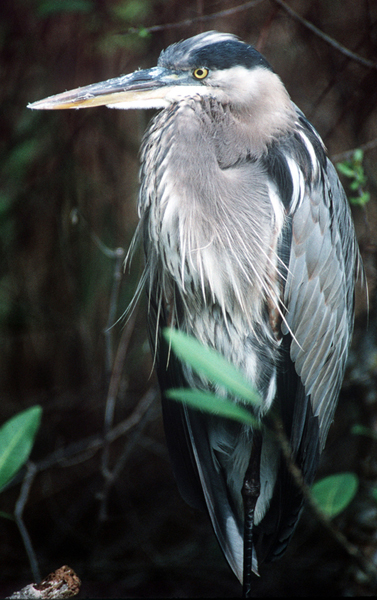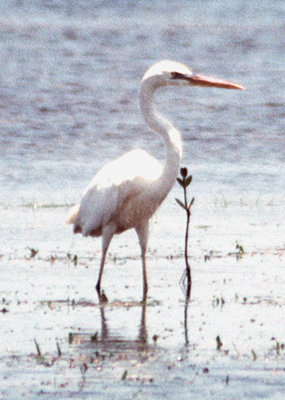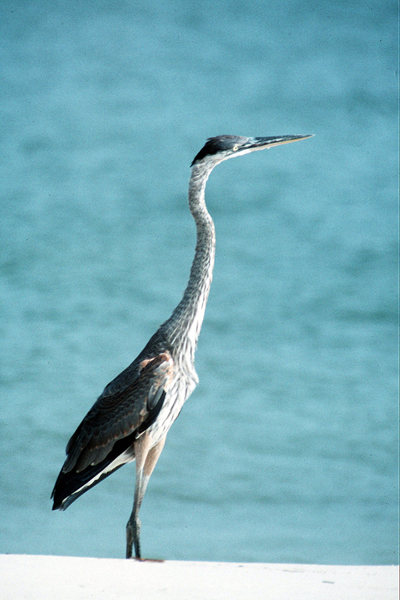|
Great Blue Heron Ardea herodias Garzón Cenizo,
|
 |
|
Photo: L. Miranda
|
|
IDENTIFICATION: The tallest bird in Puerto Rico, the Great Blue Heron has a huge, pointed bill, a gray and blue-gray body, with a black and white head pattern. The "thighs" are chestnut. In flight the Great Blue Heron’s long legs trail behind it, and it holds its neck in an "S"-shaped curve. Its slow, deep wing beat is distinctive even at a distance. An all-white form, the Great White Heron, has rarely been sighted in Puerto Rico. Length: 117 cm.; weight: 2,200 g; wingspan: 183 cm.
VOICE: A low-pitched squawk when disturbed, but otherwise not vocal away from breeding sites. Audio 3 ( M. Oberle). HABITAT: Forages on ocean shores, lagoons, rivers, marshes, mangroves, ponds, and occasionally grassy fields. HABITS: Feeds mostly on fish, but also will eat amphibians, snakes, crabs and other invertebrates, as well as small mammals and birds when it can catch them. The Great Blue Heron stands motionless for long periods, then quickly grabs a passing fish. It sometimes tosses its prey in the air and then swallows it head first. As with most other herons, its middle toe is modified as a comb to preen the feathers on its head and neck. The Great Blue Heron nests in North America in swamp colonies where it builds a stick nest in treetops. Both sexes build the nest, incubate the eggs, and feed the young. Between 2-6 eggs are laid in a clutch. The incubation period is about 27 days, and the young first fly 51-81 days after hatching. Individual birds have survived to at least 24 years of age in the wild. STATUS AND CONSERVATION: Common winter visitor to Puerto Rico, with a few individuals lingering through the summer and even breeding. This species has suffered from hunting, as well as wetland drainage and chemical contamination. RANGE: Breeds from southern North America to southern Mexico, as well as the Bahamas, the Virgin Islands, Cuba, and the Galapagos Islands. Some birds migrate to winter grounds throughout the Caribbean and Central America, and south to northwestern South America. A regular sight in Puerto Rican lagoons and swamps in winter, even next to busy airport runways. TAXONOMY: CICONIIFORMES; ARDEIDAE |
|
 |
|
|
Photo: B. Hallett
|




